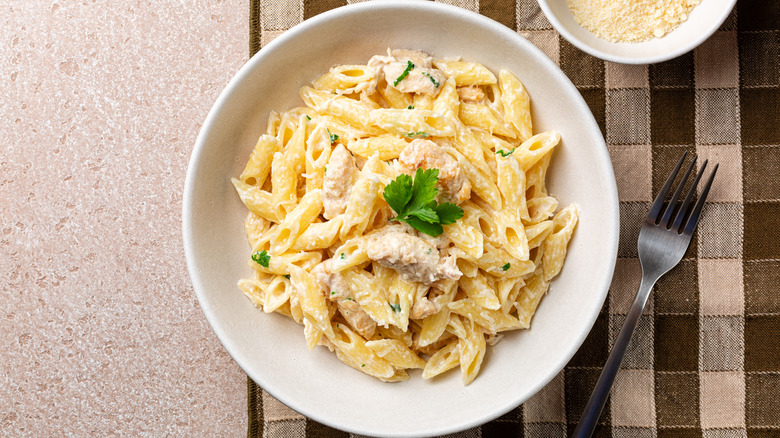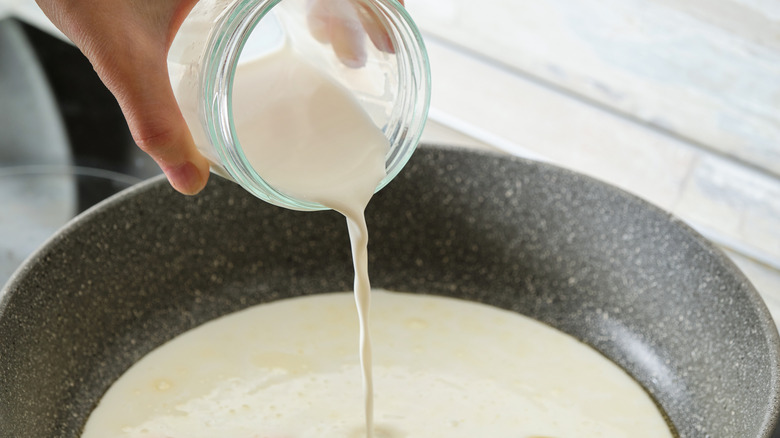Why You Should Be Cautious Microwaving Food With Creamy Sauces
Our microwaves are things that many of us can't live without, since they're so undeniably convenient. At this point, we all know they do way more than re-heating. You can make make desserts like chocolate fudge in the microwave, steam your broccoli, or cook some potato chips. But every so often, you might get humbled by microwaving something you shouldn't – and foods with creamy sauces can be one of those things.
You might think reheating your alfredo pasta in the microwave is going to be quick and convenient, only to be left with a separated or oily mess. Microwaves reheat and cook food using high heat, which isn't a great match for cream-based sauces. Overheating essentially causes the proteins from the dairy products to cling together, creating a lumpy texture. Emulsifying ingredients like eggs are also negatively impacted by too much heat, causing the sauce to separate.
If you're still set on using your microwave, heat your sauce-based food on a lower power setting, in short intervals, pausing and stirring it in between. To stop your sauce from drying out, and add a bit of the creaminess back into it, you can also add a tablespoon or so of liquid (like milk) — and just keep adding more if necessary.
Other ways to heat up a cream-based sauce
If you don't mind spending a little more time in the kitchen, reheating your creamy meal on the stovetop is a great alternative to the microwave. Warm up your sauce on a low heat, adding in some liquid to help restore the sauce's original texture. Make sure that you're constantly stirring, as this will distribute the heat evenly and prevent any separation — and use a whisk if you're heating the sauce on its own. Remember, take it off the heat as soon as it's warmed through.
Gently reheating your creamy sauce and food in the oven is also possible — The Pasta Queen (who hates the microwave for reheating pasta) stands by this method. It's a much more hands-off approach. You can either add some liquid to your meal and cover it with aluminum foil before baking, or put the baking dish with your food in a larger dish filled with water (like a double-broiler method).
Both of these techniques will ensure your sauce won't dry out, while heating it slowly enough that it won't separate. But whether you choose to reheat your creamy sauce in the microwave, stovetop, or oven, the key to keeping it smooth is gentle heat — and a little extra liquid.

